The dark side of feed protein
Protein is what livestock farmers want to produce, but this doesn’t necessarily mean feeding animals high-protein diets, warned UCD dairy nutrition researcher Dr Karina Pierce. “If we feed the animal above and over what they need, it will be excreted, especially in urine,” she warned.
This increases feed costs as well as ammonia, nitrous oxide and nitrate pollution. A 12.5% protein ration is €21/t cheaper than a 20% protein alternative from the same raw materials providing the same energy.
“We have a grass-based system, which is positive for our image, but the problem is that there is a lot of nitrogen in grass,” Karina said. Nitrogen is a major chemical component of protein. Meanwhile, growing animals have higher protein needs than mature ones, and lactating cows have different needs throughout the year. Excess protein can reduce fertility, she added.
Crude protein is only one of the mentions on feed labels and Pierce urged farmers to ask suppliers about detailed contents. “We shouldn’t be buying on the basis of protein. Look at energy first,” she said. “High protein does not mean high energy.”
Teagasc advisers Paul Fox and Mark Coyne explained how Tullamore, Co Offaly, calf-to-store farmer Conor McGrath doubled stocking rate on his 23ac out-farm along the N52 by-pass. The single field carried 30 cattle, achieving 0.7kg daily liveweight gain in 2016. The following year, they divided it into nine paddocks at a cost of €2,500 for fencing and water, and doubled nitrogen application from 54 to 103 units/ac.

Cattle on Conor McGrath's outfarm in March. \ Shaun Diver
“We extended the grazing seasons by 30 days,” Mark said, adding that the out-farm carried 55 cattle and yielded extra silage in 2017. Cattle were 40kg heavier, generating €9,300 extra gross output for the farmer. Performance was back in 2018, but still well ahead of 2016.
This year, 55 cattle went out on 19 February, targeting 277 days at grass and a daily liveweight gain of 0.95kg. “We plan to settle at 3.6LU/ha,” Paul said.
The project combines environmental savings from the extending grazing season and lower costs per kg liveweight gain, thanks to the extra grass grown. It is there for all farmers to see along the public road, with “Grass on the bypass” signposts.
Payments for nettle patches
Co Cork dairy farmer Donal Sheehan drew some blank stares when he presented his approach to farm pests. He manages the local Biodiversity Regeneration in a Dairying Environment (BRIDE) project, which pays farmers for wildlife habitats on their land in the Bride valley. Examples of eligible features include nettle patches, which he said support five species of butterflies. Farmers also receive incentives to use rodent traps instead of poison.
Donal said a Facebook picture he had shared of owl chicks feeding on mice in a shed had gone viral: “The farmer was put on a pedestal in the comments.”
Payments also reward farmers who refrain from cutting hedges, spraying cereal stubble or grazing and spreading within 3m of river banks.
“This puts positive, monetary value on the habitats” on intensive farms, Donal said.
“There’s no reason to feel that going green, you should be out of pocket. That shouldn’t be the case,” he added.
Co Waterford dairy farmer Gillian O’Sullivan said once-a-day (OAD) milking had social, economic and environmental benefits. When she took over the family farm with her husband Neil and three children, Gillian was advised to expand the herd and invest in infrastructure to fund a farm manager’s position. Instead, they chose to milk once a day to reduce labour requirements and spend time with their family.
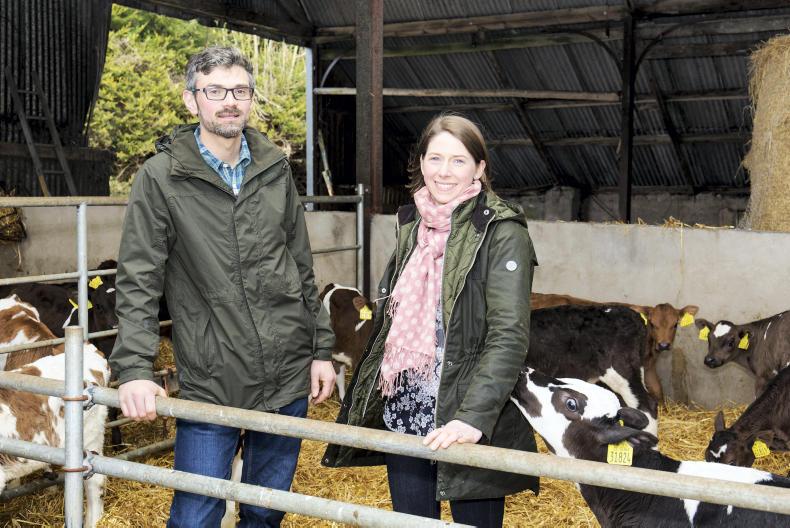
Gillian and Neil O'Sullivan on their farm in \ RTÉ
With the right type of cow, Gillian said OAD delivers more milk solids from lower yields, cutting Glanbia’s 4.22c/l processing charge. She gave the example of a first generation Jersey cross out of a Friesian cow consistently achieving 5.3% fat and 4.2% protein over an average of 5,200l/year. Gillian’s cows each yielded the same 390kg milk solids as the Glanbia average last year, at a lower litre yield but higher price.
OAD reduces energy consumption in the parlour, and the farm is upgrading to a grant-aided variable speed drive this year. “The focus is on growing and optimising grass,” said Gillian, with clover incorporation in swards and protected urea fertilisation for better environmental performance. Her next plans are to include plantain, use low-emission slurry spreading and plant pollinator-friendly hedges.
Cattle and trees side-by-side
Co Laois drystock and forestry farmer Pat Hennessy advocates the planting of trees on marginal land alongside cattle farming – his own strategy since 1991.

Pat Hennessy on his farm in Ballaghmore Co Laois. \ Jack Caffrey
“Take a look at your land: what am I getting out of every acre? Cattle on marginal land – you have to question it,” he said. An 8ac plot Sikta spruce clearfelled two years ago as a retirement fund, returned €73,284 in timber sales,” Hennessy said.
There is commercial demand for conifers, he rejected claims that they were bad for biodiversity, saying the woods open up after the first thinning and let light and wildlife in. Broadleaves have more of an environmental value and the carbon dioxide trees store, currently worth €26/t, is forecast to quadruple in value by 2030,” Hennessy said.
Read more
Teagasc grass walk on 23ac parcel in Tullamore
Intensive farmers to be paid for field margins
Meet the farmer paid to sow a crop of nettles
Farmer Writes: finding the right work-life balance
Hogan plants idea of 1ha forestry on farmer's lands in next CAP
Forestry’s role in climate change debate
The dark side of feed protein
Protein is what livestock farmers want to produce, but this doesn’t necessarily mean feeding animals high-protein diets, warned UCD dairy nutrition researcher Dr Karina Pierce. “If we feed the animal above and over what they need, it will be excreted, especially in urine,” she warned.
This increases feed costs as well as ammonia, nitrous oxide and nitrate pollution. A 12.5% protein ration is €21/t cheaper than a 20% protein alternative from the same raw materials providing the same energy.
“We have a grass-based system, which is positive for our image, but the problem is that there is a lot of nitrogen in grass,” Karina said. Nitrogen is a major chemical component of protein. Meanwhile, growing animals have higher protein needs than mature ones, and lactating cows have different needs throughout the year. Excess protein can reduce fertility, she added.
Crude protein is only one of the mentions on feed labels and Pierce urged farmers to ask suppliers about detailed contents. “We shouldn’t be buying on the basis of protein. Look at energy first,” she said. “High protein does not mean high energy.”
Teagasc advisers Paul Fox and Mark Coyne explained how Tullamore, Co Offaly, calf-to-store farmer Conor McGrath doubled stocking rate on his 23ac out-farm along the N52 by-pass. The single field carried 30 cattle, achieving 0.7kg daily liveweight gain in 2016. The following year, they divided it into nine paddocks at a cost of €2,500 for fencing and water, and doubled nitrogen application from 54 to 103 units/ac.

Cattle on Conor McGrath's outfarm in March. \ Shaun Diver
“We extended the grazing seasons by 30 days,” Mark said, adding that the out-farm carried 55 cattle and yielded extra silage in 2017. Cattle were 40kg heavier, generating €9,300 extra gross output for the farmer. Performance was back in 2018, but still well ahead of 2016.
This year, 55 cattle went out on 19 February, targeting 277 days at grass and a daily liveweight gain of 0.95kg. “We plan to settle at 3.6LU/ha,” Paul said.
The project combines environmental savings from the extending grazing season and lower costs per kg liveweight gain, thanks to the extra grass grown. It is there for all farmers to see along the public road, with “Grass on the bypass” signposts.
Payments for nettle patches
Co Cork dairy farmer Donal Sheehan drew some blank stares when he presented his approach to farm pests. He manages the local Biodiversity Regeneration in a Dairying Environment (BRIDE) project, which pays farmers for wildlife habitats on their land in the Bride valley. Examples of eligible features include nettle patches, which he said support five species of butterflies. Farmers also receive incentives to use rodent traps instead of poison.
Donal said a Facebook picture he had shared of owl chicks feeding on mice in a shed had gone viral: “The farmer was put on a pedestal in the comments.”
Payments also reward farmers who refrain from cutting hedges, spraying cereal stubble or grazing and spreading within 3m of river banks.
“This puts positive, monetary value on the habitats” on intensive farms, Donal said.
“There’s no reason to feel that going green, you should be out of pocket. That shouldn’t be the case,” he added.
Co Waterford dairy farmer Gillian O’Sullivan said once-a-day (OAD) milking had social, economic and environmental benefits. When she took over the family farm with her husband Neil and three children, Gillian was advised to expand the herd and invest in infrastructure to fund a farm manager’s position. Instead, they chose to milk once a day to reduce labour requirements and spend time with their family.

Gillian and Neil O'Sullivan on their farm in \ RTÉ
With the right type of cow, Gillian said OAD delivers more milk solids from lower yields, cutting Glanbia’s 4.22c/l processing charge. She gave the example of a first generation Jersey cross out of a Friesian cow consistently achieving 5.3% fat and 4.2% protein over an average of 5,200l/year. Gillian’s cows each yielded the same 390kg milk solids as the Glanbia average last year, at a lower litre yield but higher price.
OAD reduces energy consumption in the parlour, and the farm is upgrading to a grant-aided variable speed drive this year. “The focus is on growing and optimising grass,” said Gillian, with clover incorporation in swards and protected urea fertilisation for better environmental performance. Her next plans are to include plantain, use low-emission slurry spreading and plant pollinator-friendly hedges.
Cattle and trees side-by-side
Co Laois drystock and forestry farmer Pat Hennessy advocates the planting of trees on marginal land alongside cattle farming – his own strategy since 1991.

Pat Hennessy on his farm in Ballaghmore Co Laois. \ Jack Caffrey
“Take a look at your land: what am I getting out of every acre? Cattle on marginal land – you have to question it,” he said. An 8ac plot Sikta spruce clearfelled two years ago as a retirement fund, returned €73,284 in timber sales,” Hennessy said.
There is commercial demand for conifers, he rejected claims that they were bad for biodiversity, saying the woods open up after the first thinning and let light and wildlife in. Broadleaves have more of an environmental value and the carbon dioxide trees store, currently worth €26/t, is forecast to quadruple in value by 2030,” Hennessy said.
Read more
Teagasc grass walk on 23ac parcel in Tullamore
Intensive farmers to be paid for field margins
Meet the farmer paid to sow a crop of nettles
Farmer Writes: finding the right work-life balance
Hogan plants idea of 1ha forestry on farmer's lands in next CAP
Forestry’s role in climate change debate








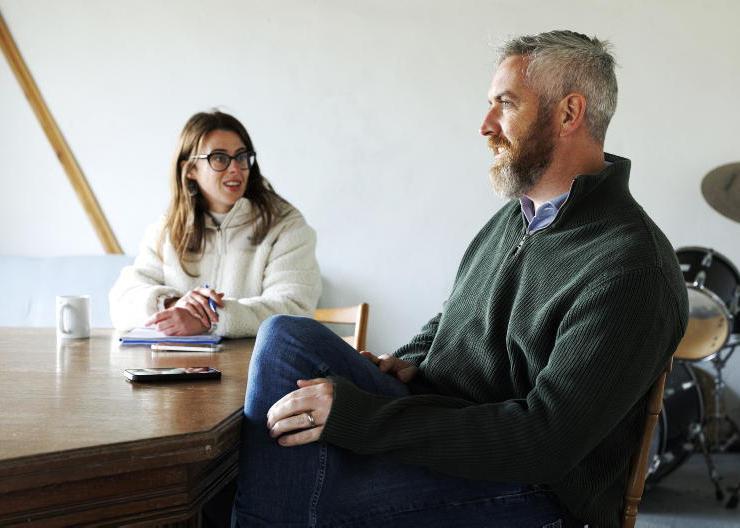

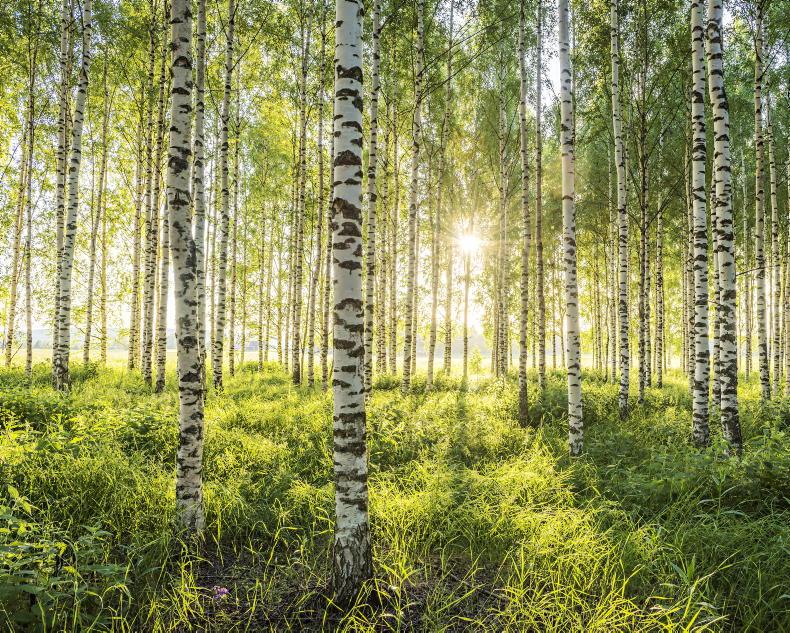
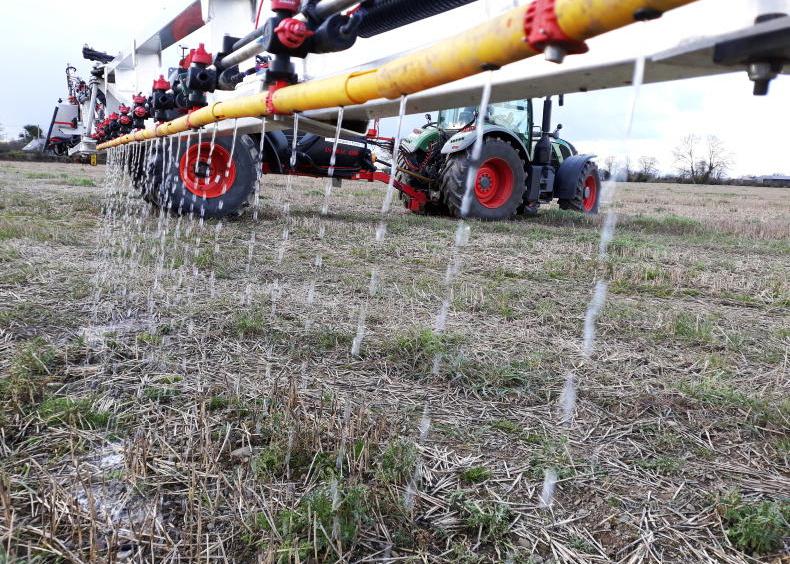
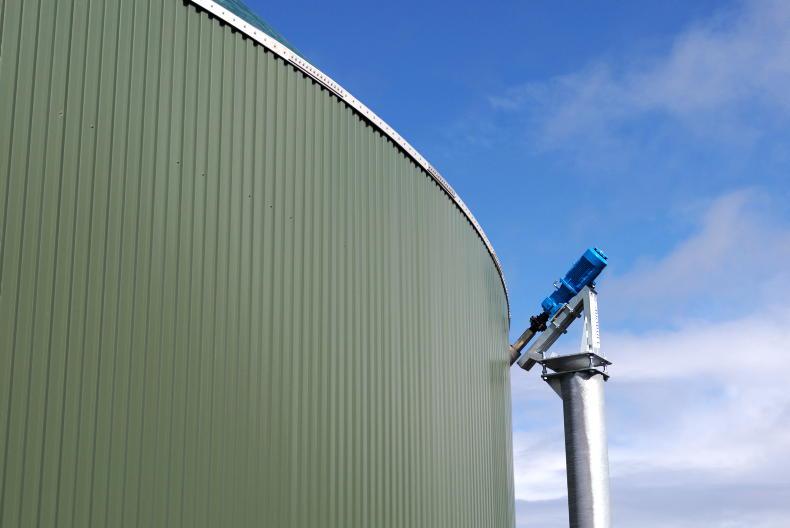
SHARING OPTIONS